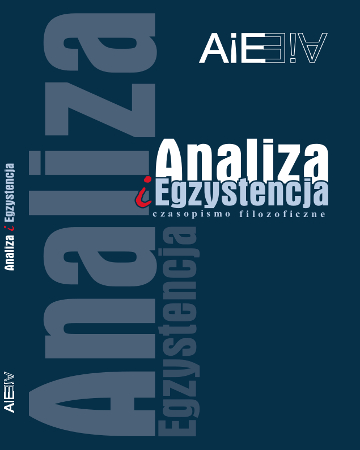
ISSN: 1734-9923
eISSN: 2300-7621
OAI
DOI: 10.18276/aie.2019.45-03





Issue archive /
45 (2019)
Krzywdzenie a przyzwalanie na krzywdę. Część II: Prawo do samoobrony
(Hurting and allowing harm. Part II: A right to self defense)
| Authors: |
Mirosław
Rutkowski
Uniwersytet Szczecińśki |
| Keywords: | hurting allowing harm Tooley's machine the principle of moral symmetry third party counterfactual definition of harm third party observer right to self-defense |
| Data publikacji całości: | 2019 |
| Page range: | 17 (43-59) |
Abstract
Hurting and allowing harm. Part II: A right to self defense
In this article I defence the thesis that there is a morally significant difference between doing harm (or harming) and merely allowing harm to happen.
Download file
Article file
Bibliography
| 1. | Benatar, D. (2009). Better Never to Have Been. The Harm of Coming into Existence, New York. |
| 2. | Bennett, J. (1981). „Morality and Consequences”, w: The Tanner Lectures on Human Values, t. 2, red. S. McMurrin, Salt Lake City. |
| 3. | Cohen, C.B. (1997). „The Morality of Knowingly Conceiving Children With Serious Conditions: An Expanded „Wrongful Life” Standard”, w: Contingent Future Persons. On the Ethics of Deciding Who Will Live, or Not, in the Future, red. N. Fotion, J.C. Heller, Dordrecht. |
| 4. | Davis, N. (1984). Abortion and Self-Defense, Philosophy & Public Affairs, t. XIII. |
| 5. | Feinberg, J. (1987). Harm to Others, New York. |
| 6. | Feinberg, J. (1992). „Wrongful Life and the Counterfactual Element in Harming”, w: tegoż Freedom and Fulfilment, Princeton. |
| 7. | Harman, E. (2009). „Harming as Causing Harm”, w: Harming Future Persons. Ethics, Genetics and the Nonidentity Problem, red. M.A. Roberts, D.T. Wasserman, Dordrecht. |
| 8. | Harris, J. (1992). „The Wrong of Wrongful Life”, w: tegoż In Wonderwoman and Superman: The Ethics of Human Biotechnology, Oxford. |
| 9. | Kagan, S. (1989). The Limits of Morality, Oxford. |
| 10. | Kamm, F.M. (1983). Killing and Letting Die: Methodological and Substantive Issues, Pacific Philosophical Quarterly, t. 64. |
| 11. | Kamm, F.M. (1986). Harming, Not Aiding, and Positive Rights, Philosophy and Public Affairs, t. 15. |
| 12. | Kamm, F.M. (1992). Non-Consequentialism, the Person as End -To-Itself, and the Significance of Status, Philosophy and Public Affairs, t. 21. |
| 13. | Kamm, F. (2007). Intricate Ethics, New York. |
| 14. | Kamm, F. (1996). Morality, Mortality, t. II: „Rights, Duties, and Status”, New York. |
| 15. | McMahan J. (1993). Killing, Letting Die, and Withdrawing Aid, Ethics, t. 103. |
| 16. | McMahan J. (2012). Etyka zabijania, Warszawa. |
| 17. | Montague, P. (1981). Self-Defence and Choosing among Lives, Philosophical Studies, t. 40. |
| 18. | Morreim, E.H. (1988). The Concept of Harm Reconceived, Law and Philosophy, t. 7. |
| 19. | Parfit, D. (2012). Racje i osoby, Warszawa. |
| 20. | Różyńska, J. (2013). Złe geny, „złe życia” i koncepcja krzywdy progowej, Etyka, t. 47. |
| 21. | Rutkowski, M. (2017). Granice etyki, Warszawa. |
| 22. | Steinbock, B. (2009). „Wrongful Life and Procreative Decisions”, w: Harming Future Persons. Ethics, Genetics and the Nonidentity Problem, red. M.A. Roberts, D.T. Wasserman, Dordrecht. |
| 23. | Thomson, J.J. (2009). „Obrona własna”, w: Etyka wojny. Antologia tekstów, red. T. Żuradzki, T. Kuniński, Warszawa. |